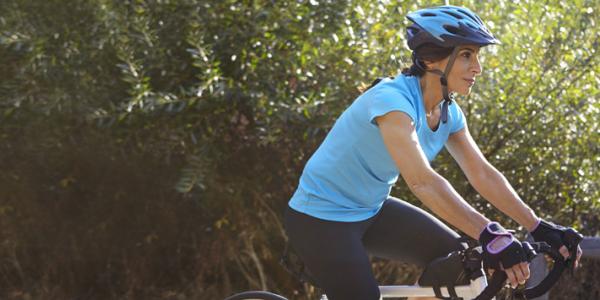
This is a story about Nicole—a mother, wife and triathlete who would rather be logging miles on her bike than dealing with extreme neck pain. So when two cervical discs ruptured in her spine, she was determined to find a solution that gave her relief and allowed her to return to triathlon training.
At first, Nicole could deal with the pain. But before long, it turned from manageable to excruciating. Traveling for work became problematic as she could no longer lift her bag into the overhead bins. Her pain progressed to a sensation of numbness which made simple tasks, like holding a coffee cup, nearly impossible. "When you’re busy and working like me, you can be in denial of the whole situation. I didn’t want to accept the fact that I was getting worse," Nicole remembers.
Frustrated but not defeated, Nicole began to research her painful experience. “My job is in research, and my background is in nursing, so I immediately dug into my resources,” Nicole shares. Essentially, she had two options for surgery: traditional fusion surgery or an artificial disc replacement with a Mobi-C device. Spinal fusion surgery could have resulted in the end of Nicole’s athletic pursuits and even a reduction in her busy work travel schedule. Nicole's orthopedic surgeon, Dr. Jeffrey Coe, suggested that she would be a suitable candidate for the Mobi-C option. This alternative to spinal fusion surgery would allow Nicole to experience a fuller range of motion, to be active once again, and hopefully, to return to triathlons.
Nicole stayed for two nights in the hospital. She remembers that despite being a challenging patient at times, the nurses treated her extremely well: "There are no words to express how nice the nursing team was overall." Her time at El Camino Hospital Los Gatos as well as the procedure surpassed her expectations. Nicole adds, "A few days after I left the hospital, I received a card thanking me for being such a good patient!"
Nicole's inner drive and focus was exactly what she needed to help her recover from surgery. A usually active person, she was able to slow down enough to let herself heal. "I was shocked, I couldn't believe how fast I healed." Just four weeks after surgery, Nicole was back to her old routines. Gone were the feelings of pain and numbness. Instead, she felt the desire to get back on her bike and return to swimming.
When asked what advice she would give to someone else in a similar situation, she says it's all about persistence: "Never give up. There's always a solution. If you don't act, you'll never get what you need to fix it. It might take some nerve to take action, but just think positive and see yourself returning to life as it used to be."
Now that she's back to riding and competing, Nicole feels like a new person. "I feel like a normal person who did not have surgery. I am back to doing what I always wanted to be able to do."
